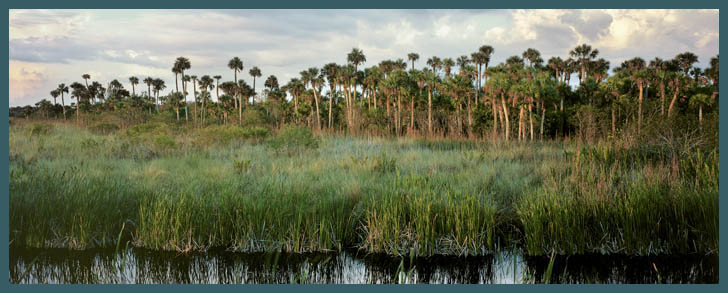|
Florida Everglades
Jellyfish
Jellyfish, jellies, or sea jellies, are free-swimming members of the phylum Cnidaria, and all have a basic body structure resembling that of an umbrella. Jelly- fish are not true fish either, American public aquariums have popularized the term jellies or sea jellies instead. They don't actually swim either; rather, the currents propel the jellies - and why even in public aquariums they need the flowing waters to replicate the currents found in the oceans.
A group of jellies is termed either a bloom or a swarm, and another term for a group is called a smack. Bloom formation is a complex process that depends on ocean currents, temperature, nutrients and oxygen concentrations. Some blooms can reach up to 100,000 in number, and jellies are more likely to stay in large blooms. FYI: Jellyfish are better able to survive in oxygen-poor water, and can thrive on plankton without competition. They can also benefit from saltier waters, that contain more iodine, which is a necessary part for the polyps turning into jellyfish.
The first part of their life cycle is called the polypoid stage, following fertilization and larval formation, called the planula. It then settles onto a firm surface and later develops into a polyp. The second part of their life cycle is called a polyp phase, which arises from a single fertilized egg, and develops into a multiple-polyp cluster, which is connected to each other by strands of tissue called stolons, referred to as 'colonial'.
Jellies do not have a central nervous system, a specialized digestive system or a circulatory system. They digest using the gastrodermal lining of their gastrovascular cavity where their nutrients are absorbed. Since their skin is thin enough that their body is oxygenated by diffusion, it needs no respiratory system. It needs no brain to function or central nervous system, instead having a loose network of 'nerves' called a 'nerve net', located in their epidermis. Jellyfish are comprised of approximately 98% water, jelly, called mesoglea. Their lifespan typically ranges from a few hours to several months; since maximum size varies as well as life span by their particular species. Even though their life spans are miniscule, they are known as one of the longest living creatures on the planet, having been around some 650,000,000 years approximately, according to Jelly Fish Facts.
Located within our own local waters of the Rookery Bay National Estuarine Research Reserve, we have the Upside-Down Jelly, which can be found, as its name suggests, upside-down. It rests in the calmer, shallow waters, with its bell side down in order to feed, but actually swims right-side up like other sea jellies.
Did you know that jellyfish are carnivores? They eat the small sea creatures that get entangled in their tentacles. These tentacles secrete little threads that paralyze their prey. Once immobilized, the jelly uses its oral arms to take it into their mouths for ingestion.
While jellyfish do not actively attack humans, it is important to note that whenever their tentacles come in contact with human flesh, as part of their natural defense mechanism, their stingers are released. Touching or being touched by a jellyfish can be quite painful and uncomfortable, sometimes even requiring medical attention - and it has even been reported that dying or beached jellyfish can still sting when touched. Jellies sting their prey using nematocysts, that are situated in specialized cells called cnidocytes and are characteristic of all Cnidaria. If you are stung by a jellyfish, the first thing you should do is carefully remove all the fragments, making sure to remove all the particles. Clean the affected area and rinse with vinegar or salt water. Fresh water is a complete no-no, since it might trigger them to release even more poison. Then, get medical help, immediately, since these stings can often be life-threatening if not taken seriously. (It can be most helpful to those treating your stings if you can tell them which species of jellies are in the water, so check your local waters and learn which species are known to inhabit this area.) In a National Science Foundation report posted in 2009, it stated that at least 150 million people around the world are exposed to jellyfish stings every year, with roughly 200,000 people stung every year in Florida, and these numbers have no doubt only increased since this report was published.
Additional Reading:
Jellyfish (True Books: Animals) by Elaine Landau, 1999 (children, 4-8 years)
Jellies by Twig George, 2001 (children, 7-10 years)
Amazing Jellies: Jewels of the Sea by Elizabeth Gowell, 2004
DVD: The Art of Nature: Jellies, 2006
The ABCS of the Florida Landscape is written by freelance writer Maureen Sullivan-Hartung who has resided in Naples for 30 years, arriving in 1981, and who loves learning about all aspects of the local flora and fauna. Another passion of hers is local history and she authored a book in November 2010, titled, Hidden History of Everglades City & Points Nearby, published by The History Press. Check her website for the book's availability or additional information about the author at >www.maureenwrites.com
msh102011
|

